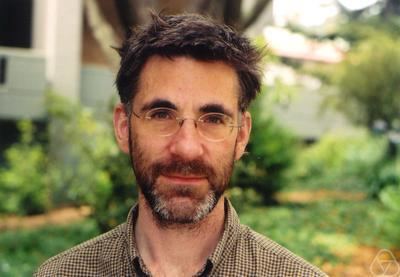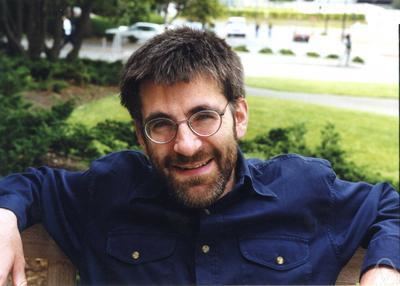Nationality British Known for Borcherds algebra | Name Richard Borcherds Role Mathematician | |
 | ||
Institutions University of California, BerkeleyUniversity of Cambridge Thesis The leech lattice and other lattices (1984) Doctoral students Daniel AllcockPeter NiemannSankaran ViswanathTathagata Basak Residence United Kingdom, United States of America Similar People Don Zagier, John Horton Conway, Igor Frenkel, Simon P Norton, Timothy Gowers | ||
Richard Ewen Borcherds (; born 29 November 1959) is a British-American mathematician currently working in quantum field theory. He is known for his work in lattices, number theory, group theory, and infinite-dimensional algebras, for which he was awarded the Fields Medal in 1998.
Contents

Early life

Borcherds was born in Cape Town, but the family moved to Birmingham in the United Kingdom when he was six months old. His father is a physicist and he has three brothers, two of whom are mathematics teachers. He was a promising mathematician and chess player as a child, winning several national mathematics championships and "was in line for becoming a chess master" before giving up chess after coming to believe that the higher levels of competitive chess are merely about the competition rather than the fun of playing.
Education

He was educated at King Edward's School, Birmingham and Trinity College, Cambridge, where he studied under John Horton Conway.
Career

After receiving his doctorate in 1985 he has held various alternating positions at Cambridge and the University of California, Berkeley, serving as Morrey Assistant Professor of Mathematics at Berkeley from 1987 to 1988. He was a Royal Society University Research Fellow. From 1996 he held a Royal Society Research Professorship at Cambridge before returning to Berkeley in 1999 as Professor of mathematics. At Berkeley, he held a Miller Research Professorship from 2000 to 2001.
Borcherds's early work included pioneering results on classification of unimodular lattices, and the introduction of new algebraic objects, most notably vertex algebras and Borcherds-Kac-Moody algebras. These ideas came together in his vertex-algebraic construction and analysis of the fake monster Lie algebra (called the monster Lie algebra at the time).
Borcherds is best known for his resolution of the Conway-Norton monstrous moonshine conjecture, which describes an intricate relation between the monster group and modular functions on the complex upper half-plane. To prove this conjecture, he drew upon theories that he had previously introduced, namely those of vertex algebras and Borcherds-Kac-Moody algebras, together with techniques of string theory, and applied them to the "moonshine module", a vertex operator algebra with monster symmetry constructed by Igor Frenkel, James Lepowsky, and Arne Meurman. Additional work in moonshine concerned mod p variants of this conjecture, and were known as modular moonshine.
Later contributions include the theory of Borcherds products, which are holomorphic automorphic forms on O(n,2) that have well-behaved infinite product expansions at cusps. Borcherds used this theory to resolve some long-standing conjectures concerning quasi-affineness of certain moduli spaces of algebraic surfaces. More recently, Borcherds has rendered perturbative renormalization, in particular the 't Hooft-Veltman proof of perturbative renormalizability of gauge theory, into rigorous mathematical language.
An interview with Simon Singh for The Guardian, in which Borcherds suggested he might have some traits associated with Asperger syndrome, subsequently led to a chapter about him in a book on autism by Simon Baron-Cohen. Baron-Cohen concluded that while Borcherds had many autistic traits, he did not merit a formal diagnosis of Asperger syndrome.
Awards and honours
In 1992 he was one of the first recipients of the EMS prizes awarded at the first European Congress of Mathematics in Paris, and in 1994 he was an invited speaker at the International Congress of Mathematicians in Zurich. In 1994, he was elected to the Royal Society of Fellows. In 1998 at the 23rd International Congress of Mathematicians in Berlin, Germany he received the Fields Medal together with Maxim Kontsevich, William Timothy Gowers and Curtis T. McMullen. The award cited him "for his contributions to algebra, the theory of automorphic forms, and mathematical physics, including the introduction of vertex algebras and Borcherds' Lie algebras, the proof of the Conway-Norton moonshine conjecture and the discovery of a new class of automorphic infinite products." In 2012 he became a fellow of the American Mathematical Society, and in 2014 he was elected to the National Academy of Sciences.
